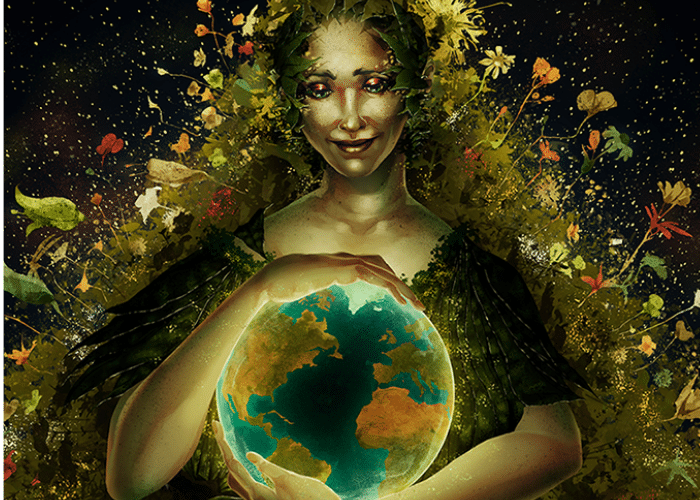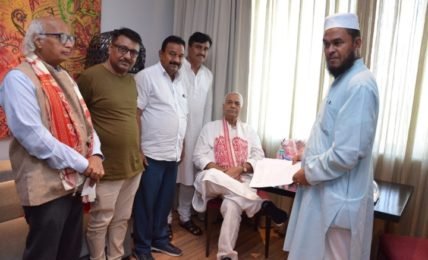THE DIVINE, THE WITCH & THE QYIAN
Through the ages women have played many role. At different times in millennia past, they have been Worshipped as Divine, Persecuted as Witch, Used as Qyian

Through the ages women have played many role. At different times in millennia past, they have been Worshipped as Divine, Persecuted as Witch, Used as Qyian

Journey of women through the age of religions
Women, through the ages, have played many roles in society. At different times in millennia, they have been Worshiped as Divine, Persecuted as Witches & Used as Qyian.
Women have had a strange relationship with religion. As religions evolved, status of women devolved. Its true that the human society has always been patriarchal but at the dawn of human civilization, the feminine forms were worshiped as Goddesses. Politics, social conditions and religious fanaticism gave rise to a puritanical religious dogma – Monotheism. (for more on rise of monotheism read my previous blogposts, “When God went to War with Gods 1 & 2“)
For Monotheism to exist as a religious dogma, it needed to exclude all other divinities/gods. AND the divine feminine was the biggest threat to rise of the jealous, angry god of monotheistic faiths. Women were the human manifestation of the divine feminine – hence the devolution of the status of women in human society is directly proportional to rise of monotheism.
The Goddess came into being at the same time as God, possibly even before the Gods. The Feminine of the divine pantheon were often as influential and sometimes as powerful as the Masculine divinity. Men and women, both, worshiped the Goddesses with equal fervor. The Goddesses stood for Nature, Wisdom, Strength, Health, Fertility, Victory, Wealth etc. The status of women in general under a traditionally society was quit similar to the status modern women enjoy today. But a few talented ones (called the chosen ones, blessed ones or those who had been “touched”) held influential positions, power and wealth. These women were known for their wisdom and wits. They were greatly valued by their families and societies. Wars were fought to seek favor of the “Blessed Ones”
From the earliest civilizations of Egypt, Akkad, Babylon, Assyria, Greece or Rome the divine feminine were worshipped in many different and sometimes overlapping forms
The myths and lore of the eras gone by are full of strong, powerful, beautiful Goddesses. The Gaia, as earth mother symbolized the nurturing, loving mother, Rehea – the docile wife turns into a tigress when her children are threatened. Isis – the life giver and mother goddess of Egypt, Ishtar – symbolized by a panther, was feared and revered by countless civilizations. She’s the mercurial one – loving or vicious as the fancy hit her. Athena – goddess of war and protector of cities. She was invoked by warriors before battle.
Arguably, worship of the divine cannot be an indicator of status of women in ancient polytheist civilizations. However examples abound to support interrelation between worship of divine feminine & empowered status of women in society.
From rulers, warriors, scholars, reformers – in the ancient polytheistic world, the divine feminine and empowered, free women existed simultaneously.
As monotheistic faiths spread throughout the ancient world, women were increasingly sidelined and removed from society. The religious zealots labelled them as curse of mankind –
“…..Amazement seized both God and Mortal Men,
To See the snare, a futile thing for men
From her has sprung the race of womankind
The deadly race and tribes of womankind
Great pain to mortal men with whom they live….”
On Pandora, Hes. Theog,
With the above words the fate of all women was sealed. The women were equated to a deadly race, sent down to snare men and lead them to ruin. These words appealed to the zealots. They now had a person to blame for their lack of “religious rigor” and when the “true god(?)” has himself declared it, who is the faithful, the momin, the zealot to question. These words, uttered before modern monotheism took roots, have been adopted by all who claim to speak for their version of One God-ism. With it began the first dark ages.
The dark ages were periods of great strife and war. They are the times when social order was upended and society, in general, went trough a period of lack of reason. These periods in history have corresponded to periods of great oppression of women, their removal & segregation from social life.
The free thinking woman was (& remains) the greatest threat to One God-ism. It was thus, easy for the zealots to blame the free thinking women for war, disease, famine. The clergy of One God-ism labelled all free thinking, educated, talented women, WITCHES – worshippers & consorts of devil. The zealous clergy throughout history have organized pogroms for mass genocide and disenfranchisement of women. None was more bloody than pogroms called the WITCH HUNTS. Any man could point a woman and condemn her to be a witch – a wife who talked back, a daughter who did not obey, a woman who had secrets of herbs, who cured all could and were condemned as witches. Burden of proof was out on the woman. Inspired by religious texts, they used water and fire. A woman was tied and thrown in water if she died then the matter ended but if she survived then she was labelled a witch (coz the devil protected her). Next she was tied to the stake and burned alive.
By the medieval period, monotheism had become the predominant religion in most of the world & both major, One God-isms, ie Islam & Christianity, had institutionalized marginalization of women. One phenomenon that was unique to this period was rise of the Qyian. The Qyian was a slave girl, with no rights over her mind, body or soul. She was brought and sold like slaves, she was used for sexual needs of her owners. But there was one major difference between a Qyian and a Slave Girl. Any woman, even a free born could be sold into slavery by her husband (who had ownership over her)
A Qyian was a slave woman who was talented in arts or sciences. The Qyian were valued by their owners both for their beauty and their talent. Cost of segregating women from society had been too high but religious edicts demanded their continued segregation. The zealots found a way to adhere to the religious edicts AND use women for their talent & intelligence. Rise of Qyians in monotheistic societies marked the next step of enslavement of women. Their beauty had already been enslaved but now society had found a way to enslave their minds, their intelligence. Qyian served her master with her beauty as well as her mind, while having no control over either.
The words of Inan, a much celebrated Qyian poetess, surmises the plight of a Qyian –
Inan wept so that her tears flowed
As pearls slip off the string
May it wither on the whip
the right hand of him who struck her unjustly
Tears of Inan “Natifi”
PS – Natifi = Sweetmeat
DISCLAIMER: The author is solely responsible for the views expressed in this article. The author carries the responsibility for citing and/or licensing of images utilized within the text.

